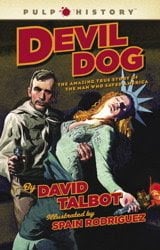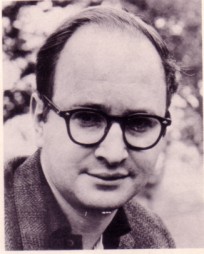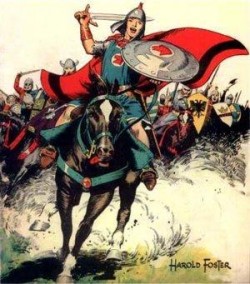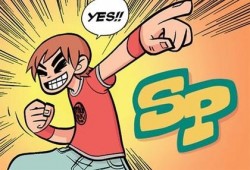Where In The World Is Spain Rodriguez?

Posted by Tom Mason Categories: Editorials, Independent,
 I know the question you’ve been asking yourself lately: What’s Spain Rodriguez been up to since the publication of Che: A Graphic Biography?
I know the question you’ve been asking yourself lately: What’s Spain Rodriguez been up to since the publication of Che: A Graphic Biography?
Spain is perhaps one of the few artists to share a name with a country who is also one of the grand masters of the underground comix with his contemporaries like Robert Crumb, Skip Williamson, Gilbert Shelton and Jay Lynch. Spain is best known in those circles as the creator of Trashman and his work appeared in the East Village Other and Zap Comix back in the day when people were uptight about working for the man, baby.
This October, Spain’s illustrations will be enhancing a new book by author David Talbot called Devil Dog: The Amazing True Story of the Man Who Saved America. Published by Simon and Schuster, the book is part of their non-fiction Pulp History series of true stories of “extraordinary feats of bravery, violence, and redemption that history has forgotten.” The book also features a promotional blurb by Robert Crumb himself.
Click to continue reading Where In The World Is Spain Rodriguez?
Advertisement
Jules Feiffer and Danny Fingeroth

Posted by Tom Mason Categories: Editorials,
 I met Jules Feiffer once at a party some years ago. He seemed uncomfortable (long before meeting me, thank goodness), but friendly and talkative, if that makes any sense. I can’t say we really had a conversation or that he’d remember I was even there - the best I could do was to mumble out that I was a big fan. I read his work in The Village Voice for a number of years when I used to commute into Manhattan, his book The Great Comic Book Heroes was one of my early Rosetta Stones for comics and I’ve probably seen his animated short Munro as many times as I’ve seen What’s Opera, Doc?
I met Jules Feiffer once at a party some years ago. He seemed uncomfortable (long before meeting me, thank goodness), but friendly and talkative, if that makes any sense. I can’t say we really had a conversation or that he’d remember I was even there - the best I could do was to mumble out that I was a big fan. I read his work in The Village Voice for a number of years when I used to commute into Manhattan, his book The Great Comic Book Heroes was one of my early Rosetta Stones for comics and I’ve probably seen his animated short Munro as many times as I’ve seen What’s Opera, Doc?
Continuing my series on cartooning and cartoonists, Jules Feiffer wrote about himself and his work back in 1964. This is pulled from an oversized saddle-stitched magazine from Allied Publications with the creatively-challenged title These Top Cartoonists Tell How They Create America’s Favorite Comics. It featured an introduction by Beetle Bailey’s Mort Walker and was compiled by Allen Willette.
Here’s Feiffer on Feiffer:
Click to continue reading Jules Feiffer and Danny Fingeroth
Hal Foster and Prince Valiant

Posted by Tom Mason Categories: Editorials,
 I get tired of hearing about Mozart. Yeah, he’s a genius and he started composing music when he was 5-years-old. I get it, fine, blah, blah, blah. You know who else is brilliant? Harold “Hal” Foster, the critically-acclaimed creator-writer-artist on Prince Valiant. He created his most famous and enduring work when he was 45-years-old. Malcolm Gladwell, take note.
I get tired of hearing about Mozart. Yeah, he’s a genius and he started composing music when he was 5-years-old. I get it, fine, blah, blah, blah. You know who else is brilliant? Harold “Hal” Foster, the critically-acclaimed creator-writer-artist on Prince Valiant. He created his most famous and enduring work when he was 45-years-old. Malcolm Gladwell, take note.
Continuing my series on cartooning and cartoonists, Hal Foster wrote about himself and his work back in 1964. This is pulled from an oversized saddle-stitched magazine from Allied Publications with the creatively-challenged title These Top Cartoonists Tell How They Create America’s Favorite Comics. It featured an introduction by Beetle Bailey’s Mort Walker and was compiled by Allen Willette.
Here’s Foster on Foster:
Click to continue reading Hal Foster and Prince Valiant
Bud Sagendorf: Popeye and Segar

Posted by Tom Mason Categories: Editorials,
 Forrest “Bud” Sagendorf was E.C. Segar’s young assistant on Popeye in the 1930s. When Segar died in 1938, King Features Syndicate considered Sagendorf too young to take over the comic strip. Instead, they put him to work in the bullpen where he worked on the Popeye comic books until 1958, when King decided to hand the strip over to him.
Forrest “Bud” Sagendorf was E.C. Segar’s young assistant on Popeye in the 1930s. When Segar died in 1938, King Features Syndicate considered Sagendorf too young to take over the comic strip. Instead, they put him to work in the bullpen where he worked on the Popeye comic books until 1958, when King decided to hand the strip over to him.
Continuing my little cartoonist series, here’s what Sagendorf had to say about his work back in 1964. This is pulled from an oversized saddle-stitched magazine from Allied Publications with the creatively-challenged title These Top Cartoonists Tell How They Create America’s Favorite Comics. It featured an introduction by Beetle Bailey’s Mort Walker and was compiled by Allen Willette. Newspaper comic strip writers and artists wrote about themselves and their work (or if they didn’t then their syndicate wrote it for them).
Here’s a previous entry in William Overgard.
And here’s the one on Fred Toole, the guy who wrote some absolutely tremendous Dennis the Menace comic books.
Here’s Sagendorf writing about himself:
Click to continue reading Bud Sagendorf: Popeye and Segar
Charlie Brown For Sale!

Posted by Tom Mason Categories: Editorials,
 I know there are people out there who’d kill to have the image of Jesus appear to them on a potato chip. And there are those who get a thrill out of bumping into a celebrity - even a D-List one - at the local Costco. There’s also a group of people who’d love to live in a house that was once owned by a famous person.
I know there are people out there who’d kill to have the image of Jesus appear to them on a potato chip. And there are those who get a thrill out of bumping into a celebrity - even a D-List one - at the local Costco. There’s also a group of people who’d love to live in a house that was once owned by a famous person.
As in: “I love this person so much that I want to live in his house after he’s dead.” It’s an odd fetish to have and thank goodness it’s not mine.
But if you love Charlie Brown, Peanuts and Snoopy and the Fantagraphics reprints can’t satisfy your love, there’s something that might. The Santa Rosa house on Montecito Avenue that creator Charles Schulz lived in back in the 1970s is up for sale. The two-story, 14-room house, originally built in 1949, has two master bedrooms (make of that what you will), five full baths and a powder room. There’s also a swimming pool, a cabana, a 1000 square-foot guest house (with two bedrooms and a full kitchen), and a chapel on the gated property.
Click to continue reading Charlie Brown For Sale!
Read More  | San Francisco Chronicle
| San Francisco Chronicle
COMIC BOOK RETAILERS IN TROUBLE?

Posted by Tom Mason Categories: Editorials,

Comic Book Retailers In Trouble sounds like a great title for a must-read graphic novel – something that maybe Drawn & Quarterly, Oni or even Fantagraphics might publish, drawn by Dan Clowes or Seth.
These kinds of stories don’t happen very often – most retailers are a swell bunch of guys who would prefer to peep only in the inside of a longbox. So when crimes allegedly involving a retailer, a convention promoter or a comic book creator suddenly make the news, well, it’s at least as newsworthy as those World’s Biggest Tomato stories your local evening news.
But riddle me this, Bat-fans: if you’re allegedly going to allegedly indulge your alleged fetish for watching women go to the bathroom, why would you choose a low-traffic area like the bathroom of a comic book store?
WEEKEND READING: Harvey Kurtzman, Stan Goldberg, Scott Pilgrim and DC!

Posted by Tom Mason Categories:

Lots of great stuff to read on the internets this weekend.
SCOTT PILGRIM: Need a fix of Bryan Lee O’Malley’s Scott Pilgrim? Total Film can hook you up. Writer Sam Ashurst has an interview with Shaun of the Dead’s Edgar Wright where he talks about his forthcoming adaptation Scott Pilgrim vs. the World. Here’s a sample from Wright’s pie-hole: “On one hand it’s very faithful to the books, on the other it has become something that has the structure of a romantic comedy action film.”
(h/t Forbidden Planet International Blog)
DC COMICS: Back in the day (that would, in this case, be 1989), comic book industry veteran KC Carlson worked for DC Comics. He left Madison, WI and moved to the big city where he eventually became Richard Bruning’s assistant and learned to nearly-master New York’s 1940s umbrella-and-revolving-door technology. Recently he blogged about his experience interviewing for the job, living in New York and trying to trick Mike Gold. There’s a lot of fun stuff you don’t think about until you’ve worked in the cramped Manhattan offices of a major comic book publisher. Like where to store the original oversized paintings by Dave McKean in a pre-digital era. Fascinating stuff, especially if you remember some of your DC players from the late 1980s and early 1990s.
HARVEY KURTZMAN: An undisputed genius. His work on EC Comics revolutionized storytelling and he set a high mark for how to tell war stories in comic books. He’s the founding editor of MAD when it started as a comic book parodying other comic books, back in 1952. With his long-time friend Will Elder he created Little Annie Fanny for Playboy. Kurtzman was The Onion, The Daily Show and David Letterman of the generation that came of age in the 1950s and 1960s. He popped a culture that needed popping. Post-MAD, one of the things Kurtzman did was gather a group of fellow creators - Elder, Jack Davis, and Al Jaffee, and Arnold Roth - and launch their own humor magazine: Humbug. Fantagraphics is releasing the entire 11-issue run of the magazine in a deluxe format edition. To tease you, they’ve put the entire first issue of Humbug online. If you’re familiar with Kurtzman, you’re already going to click the link. If you’re not familiar with him, see what everyone’s talking about and click the link.
STAN GOLDBERG: Did you ever wonder who colored all those great Marvel comics of the 1960s? That was Stan Goldberg. Stan spent much of his time drawing in the classic Archie house style chronicling the adventures of the gang from Riverdale, but he was also the uncredited colorist on those early Marvel classics. He’s the guy who set the color pattern for Spider-Man’s costume, made the Hulk green and the Fantastic Four’s unitards blue. Mark Evanier has all this and much, much more about the Stan at Marvel who wasn’t named “Lee.”
That’s all for this Friday. I’ll be back soon with more great stuff from all over.
(Artwork © Bryan Lee O’Malley)
Advertisement
© Gear Live Media, LLC. 2007 – User-posted content, unless source is quoted, is licensed under a Creative Commons Public Domain License. Gear Live graphics, logos, designs, page headers, button icons, videos, articles, blogs, forums, scripts and other service names are the trademarks of Gear Live Inc.










